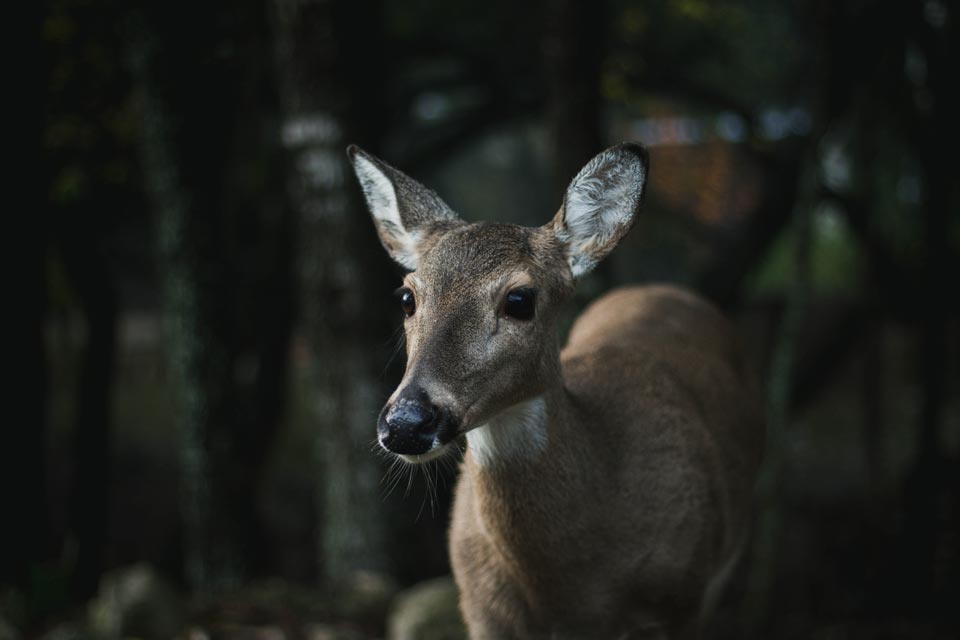In recent weeks, we’ve been asked what happens to all the deer we tag. How long have we been doing this anyway?
My brain started to scroll through the projects and the years…just how many deer have we captured over the years?
It turns out a lot!
There has been a long-standing collaboration between the Pennsylvania Game Commission and the Pennsylvania Cooperative Fish and Wildlife Research Unit since the Unit was created in 1938. I haven’t been around for quite that long. But you can see that deer research in Pennsylvania is not new. For example, one of the first publications published in 1941 dealt with deer digestive capacities and their ability to affect habitat.
The recent history of deer research projects started in 2000 (I have been around that long). That’s when a fawn survival study was launched.
So how many deer have we captured since 2000?
5,336!
The capture of 218 fawns (and their resulting fates) ushered in the start of over a decade and a half of continuous deer research. We have been capturing and collaring/tagging deer ever since.
What do deer captures look like over the years?
Well, we capture more females than males. Always have and always will. Males have higher harvest rates (lower survival) than females which means there are more females available to capture.
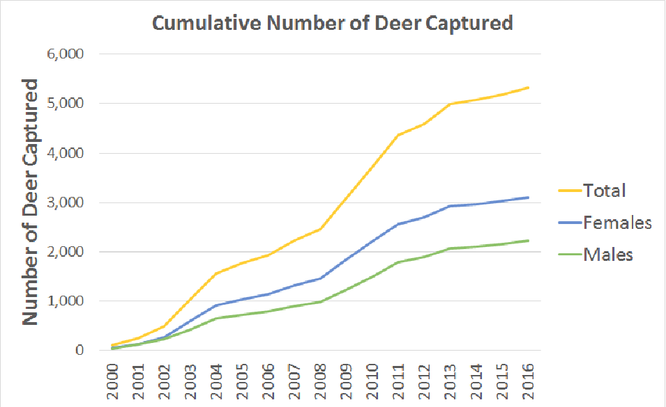
Age breakdown of captured deer is pretty interesting (excluding fawns caught in the summer as newborns). We capture more juvenile males than juvenile females – partly because at birth there are more males born than females, but I also think they are slightly easier to trap! I know a nice old German lady who once said of Airedale terriers that “they don’t get their brains until they are 2.” The same might be said of bucks.
We have captured nearly 3 times as many adult females as males. This is not only because there are more females alive than males but because adult males are more difficult to capture.
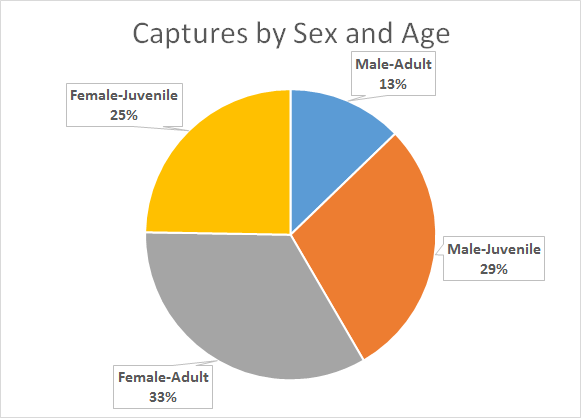
So how do we accomplish all this capturing?
Mostly Clover traps, rocket nets, and drop nets. Clover traps work anywhere. Rocket nets are portable and can be used in fairly small forest openings. Drop nets are very efficient (you can catch a lot of deer at one time) but they work best in large clearings like farm fields.
In 2002 in we tried helicopters (we caught 23 deer in 2 days) and we have used dart guns. The problem with helicopters is that Pennsylvania has too many trees (and they are tall!) and we have lots of landowners (too many landowners that need to be contacted for permission in any given area). Dart guns are very labor intensive and too many things can go wrong – we have captured a total of 3 deer using dart guns. Fawns, of course, are captured by hand.
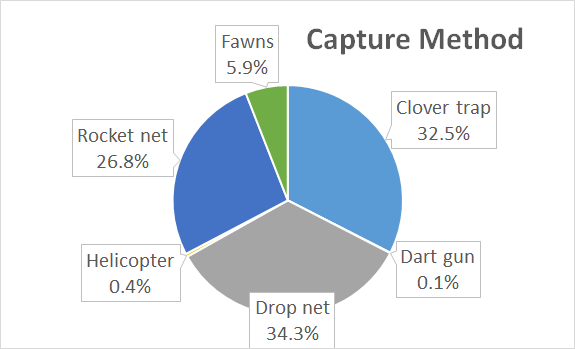
So now you have the who and the what. How about the where? It depends on the study, but over the past 17 years we have captured most of our deer on private land. In contrast, The Deer-Forest Study is primarily capturing deer on public land (Rothrock, Bald Eagle, and Susquehannock state forests).
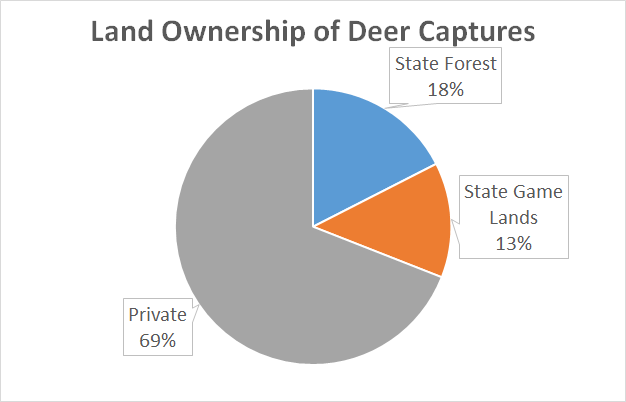
Whether its male or female, adult or juvenile, public or private land, every captured deer either gets an ear tag or a tracking transmitter.
Our initial studies focused on a specific sex or age class. For example, when we studied the effects of antler point restrictions we radio-collared males but only put ear tags in females (2002-2005). It was the opposite when we studied female survival rates (2006-2009).
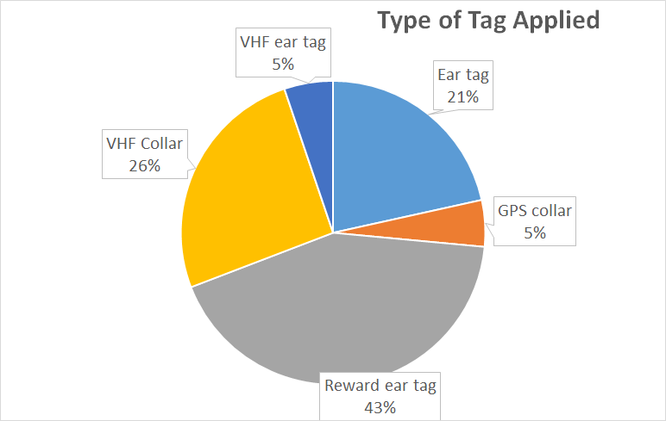
A variety of transmitters have been used for tracking: VHF (very high frequency) collars, VHF ear tags, and GPS collars. VHF collars are radio-transmitters that emit a radio signal that can be detected using a special receiver and antenna. The transmitter is relatively inexpensive ($250) but you need a field technician and a vehicle to keep track of the deer. At best you might get 2-3 locations per week.
VHF ear tags are small radio-transmitters that are glued to a cattle ear tag and fitted on a deer. We used them when we wanted to find out if putting a radio-collar on a deer influenced whether hunters would harvest that deer (unlike a collar you can’t see the VHF ear tags unless you really look for them). We found out hunters are not influenced by the presence of a radio-collar so we don’t use that type of transmitter anymore.
That’s a good thing. You have to apply a transmitter to each ear because they tend to fall out. Also, their battery life is not very good so if you want them to last a year they can only transmit 3 days a week.
We have since developed methods to estimate survival and harvest rates that require far fewer radio-collars and so we put out a limited number of radio-collars and all other deer are fitted with reward ear tags. This is a much more cost-effective approach that was developed by one of my graduate students, Franny Buderman, as part of her M.S. thesis.
Satellite GPS collars are what we are currently using for this study. They are expensive ($2,500) and also have an associated satellite fee to download the data they collect. However, we get several thousand locations per year per deer that are collected day and night regardless of the weather. We could never hire enough field techs (or keep the trucks running!) to get the same data using VHF collars. Plus the GPS locations are very accurate (the error is just a few feet!).
So what has happened to all these deer over the years? Sometimes we find out before the study ends (It’s a Race, The Life and Times of Buck 8917, Fate of Buck 9125, Happy Birthday, One Time Too Many, A Dangerous Game, Like Mother, Like Son), sometimes we have to wait…years (Inconceivable, Closure, Old Men).
I’ll cover that in more detail soon. So check back, or better yet sign up for email alerts.
-Duane Diefenbach
If you would like to receive email alerts of new blog posts, subscribe here.
And Follow us on Twitter @WTDresearch
